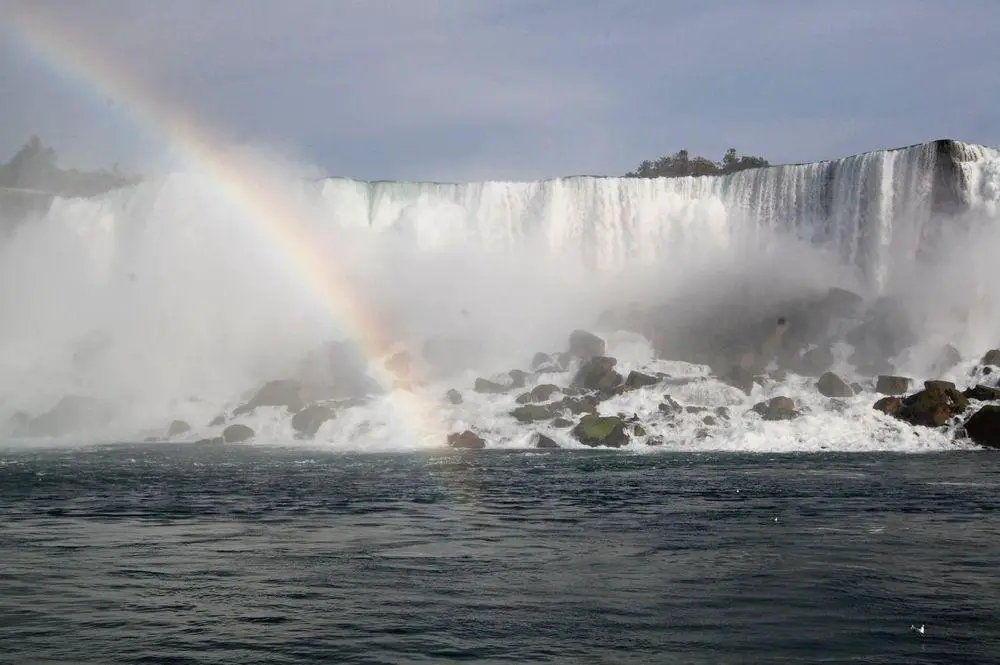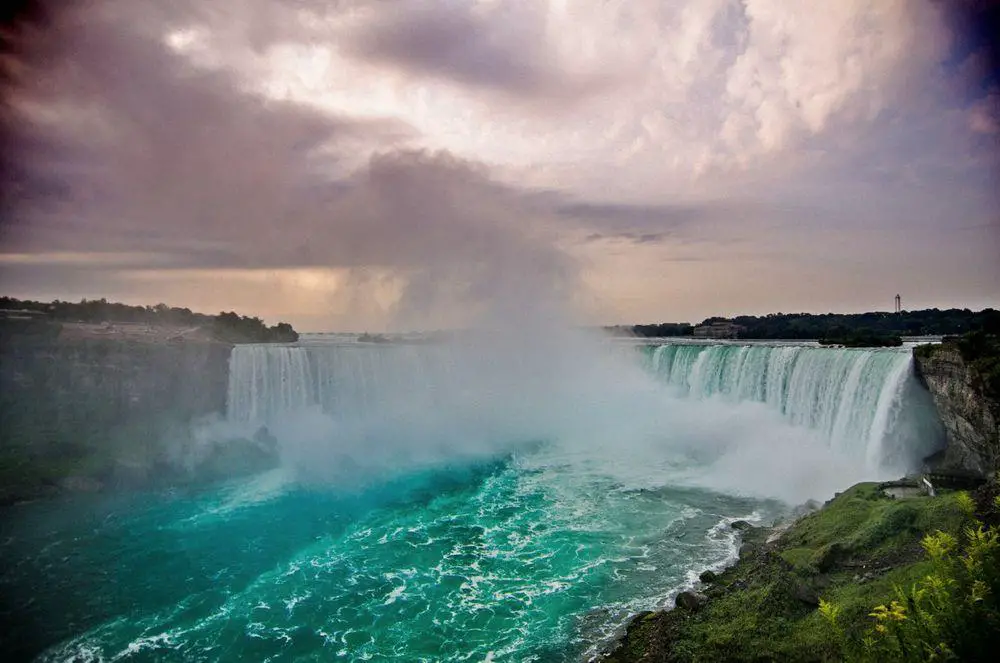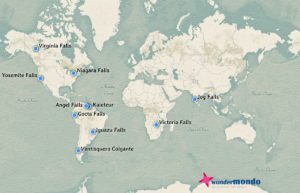World 🢖 North America 🢖 Canada 🢖 Ontario
Waterfalls 🢔 Geological wonders 🢔 Categories of wonders
Wonder
Niagara Falls
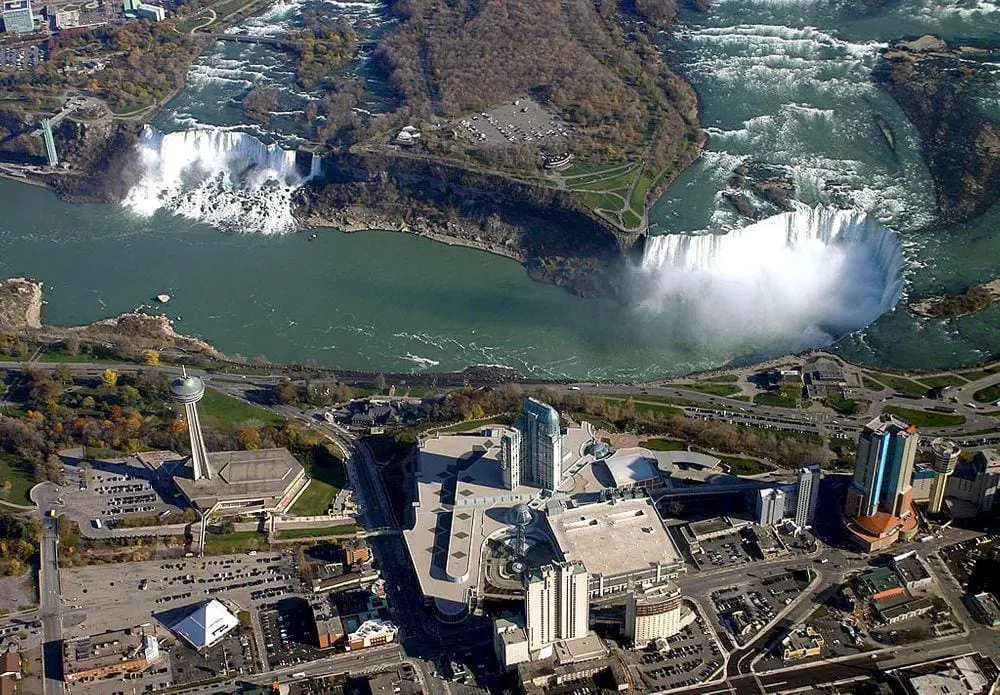
 In short
In short
No doubts – one of the greatest waterfalls in the world is Niagara Falls. Even if there is some tendency to belittle this magnificent natural monument – only a few other waterfalls in the world match or exceed Niagara.
 75.6%
75.6%
GPS coordinates
Location, address
Total height
Drops
Width
Average annual flow
Stream
Map of the site
If you see this after your page is loaded completely, leafletJS files are missing.
 In detail
In detail
Size and description
Niagara Falls has formed on Niagara River – a powerful but short river between some of the world’s largest lakes – Lake Erie and Lake Ontario. This river brings plentiful waters from the giant Great Lakes (except one – Lake Ontario which is downstream) towards the Atlantic Ocean. The river is just 50.8 km long but it has a discharge that is comparable (a bit less) to the discharge of the Yukon River.
Falls have characteristic green water – it is colored by the lime suspension and salts.
The waterfall is located approximately halfway between the lakes. The river here is divided by islands, thus the waterfall is divided into three parts: American Falls, Bridal Veil Falls, and Horseshoe Falls.
Three parts of Niagara Falls
American Falls is entirely on the American side. The small Luna Island divides it from the Bridal Veil Falls which also are in the area of the United States. After some 480 m wide Goat Island comes the most impressive – Horseshoe Falls which is located both in Canada and a little bit – in the United States.
American Falls receive some 10% of the total flow of Niagara. Nevertheless, even if considered alone, this is a magnificent waterfall, 21-34 m tall and 290 m wide. If the height of the talus is added, the height of the falls is 57 m. The enormous heap of talus at the base of falls formed over the last 150 years, when the overhanging ledge of falls fell down.

Bridal Veil Falls is just 17 m wide. Vertical fall is 24 m, followed by fall over 31 m tall heap of the talus: thus the total height of this fall is 55 m. Behind this waterfall formed an alcove: Cave of the Winds, which is some 9 m deep, 40 m tall, and 30 m wide. Guided tours to this place behind the falls started already in 1841. Visiting the cave was an interesting experience because the moving mass of water moves the air as well and in the cave is a constant whirlwind that could be as strong as a tropical storm. The cave became dangerous and collapsed in 1954. Currently, visitors can descend to the base of falls in this place and enjoy the damp air, splashes, and wind.
Horseshoe Falls receive some 90% of the Niagara waters. This is the tallest of three parts – 51 m tall and 820 m wide, the most admired part of Niagara Falls.
Flow rate
The flow rate in this waterfall is the highest in North America and one of the highest in the world – average flow is 2,400 m3 per second but a flow of some 6,400 m3 per second has been recorded as well. The highest flow is in the late spring-early summer when Lake Erie receives more water.
Sound
Early European explorers of Niagara Falls were amazed by the powerful sound of the falls. Falls could be heard from a distance of some 45 kilometers and more than one kilometer from the falls people could not hear each other.
Today it is not like this anymore – a major part of the water is diverted to the hydropower plants.
Geological history
Niagara Falls formed on Niagara Escarpment – an enormous escarpment that extends from Rochester (New York, USA) to the western side of Lake Michigan. It was formed by the erosion of rocks that have varied resistance – the harder layer of limestone and dolostone forms the escarpment while the softer rocks have been washed away over millions of years. Hundreds of bigger and smaller waterfalls have formed over this escarpment but Niagara Falls are the largest by far.
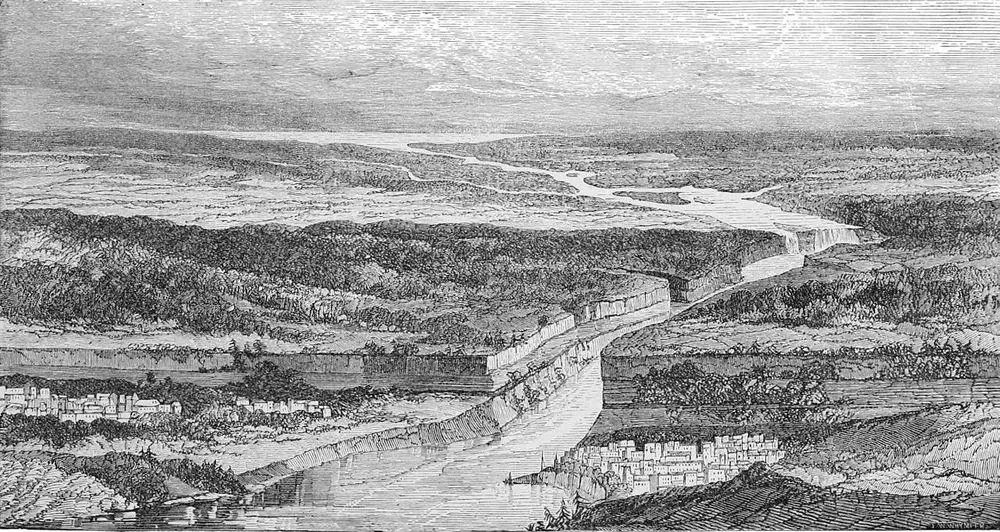
Falls formed at the end of the last ice age more than 10 thousand years ago. Then water from the Great Lakes found a way over the Niagara Escarpment right here.
Initially, at the end of the last ice age, the waterfall was closer to Lake Ontario per some 10.9 km. Waterfall receded per some 0.9 m every year but now, due to the lesser amount of water erosion has slowed down to some 0.3 m every year. Nevertheless, after some 50 thousand years the waterfall would reach Lake Erie and this would mean the end for the waterfall and also the decrease of Lake Erie.
Human history
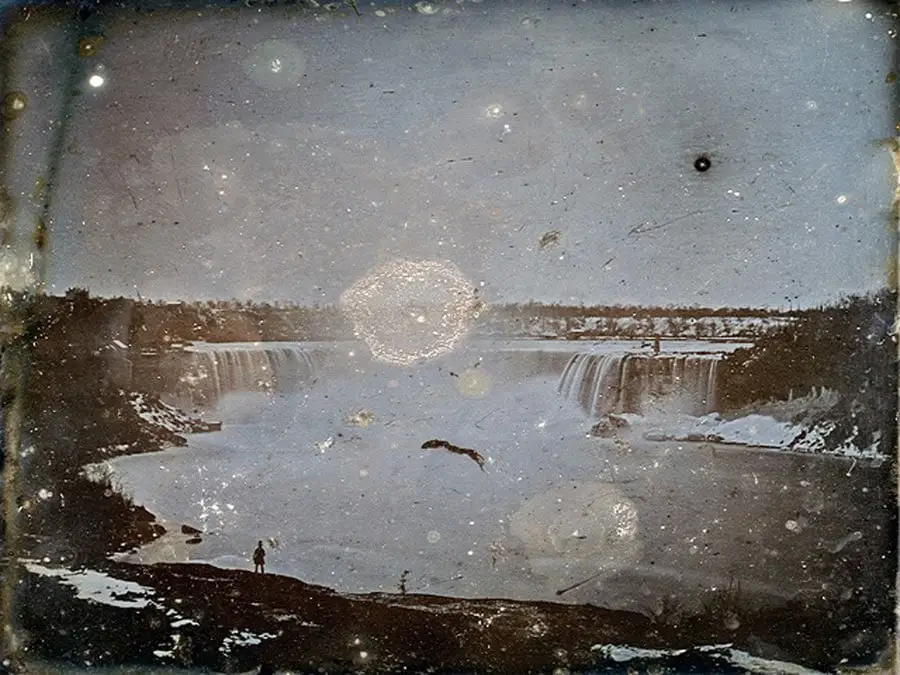
Timeline
- The first people (Clovis culture) could be present already at the moment when the falls formed.
- Name of Niagara, most likely, comes from one of the Iroquoian languages although there is no consensus about its origin and meaning.
- Europeans heard about the falls from local people already in the 16th century when the exploration of Canada started. But it is not entirely clear which European was the first to see these falls: these could be some of the participants of the expedition of Samuel de Champlain in 1604 but the first proper description of this waterfall belongs to Belgian missionary Louis Hennepin in 1677.
- In the middle of the 19th century, this became a notable tourist destination and tourism gave work to many local people.
- The best-known tourist attraction here is a boat cruise “Maid of the Mist” operating since 1848.
- One of the first photographs of a natural landmark (the first one?) was taken in 1840 at the falls.
- Around the 1870ies industry takes the first hand and numerous local industries started to use the power of falls and limited the development of tourism.
- In 1881 near the falls was built the first hydroelectric power plant in the world – Schoelkopf Power Station No. 1.
- In 1885 was created Niagara Reservation – the first state park in New York. Further work with the restoration of the landscape around the falls was an innovation. Nevertheless, the landscape around the falls is urbanized now, with skyscrapers and observation towers, boats, and an endless flow of tourists.
- Here was developed also one of the first alternating current power plants in 1885. Now some 50 – 75% of the flow of Niagara River is diverted to hydropower plants through underground channels. Canada and USA have also agreed to keep a certain flow of water in order to maintain the tourist industry in the region. Hydropower plants should maintain an unbroken curtain of water in the falls.
- Tourism in this area further increased after the use of automobiles became commonplace after World War I. Since then intense development around the falls started. This development is conflicting: humans want to harness the power of the water for electricity generation, they want to earn as much from tourism as possible, and at the same time: they want to preserve the natural beauty of falls.
- Every year this amazing monument of nature is visited by some 14 – 28 million visitors.
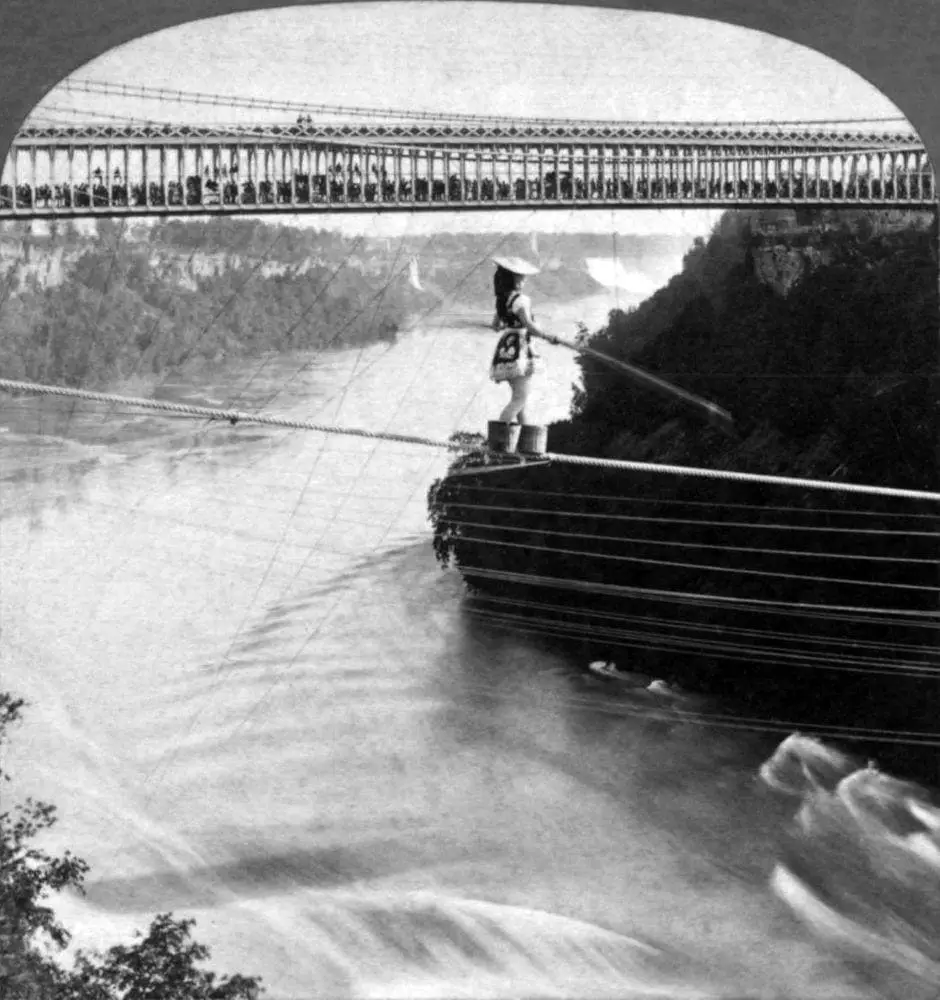
Stunts
If there exists a waterfall that is part of the pop culture, it is Niagara Falls.
This famous waterfall and eternal crowds around it have attracted countless daredevils, jumping in the falls with barrels, boats, or just without anything, walking in ropes. This is strictly forbidden but nevertheless, from time to time daredevils manage to jump here, some surviving, some – not.
The latest great stunt was the 550 m long tightrope walk by Nik Wallenda in 2012 – the longest unsupported tightrope walk in history.
References
- Colossal Cataract: The Geologic History of Niagara Falls. 1981. ISBN-10: 0873955234.
Niagara Falls are included in the following article:
 Linked articles
Linked articles
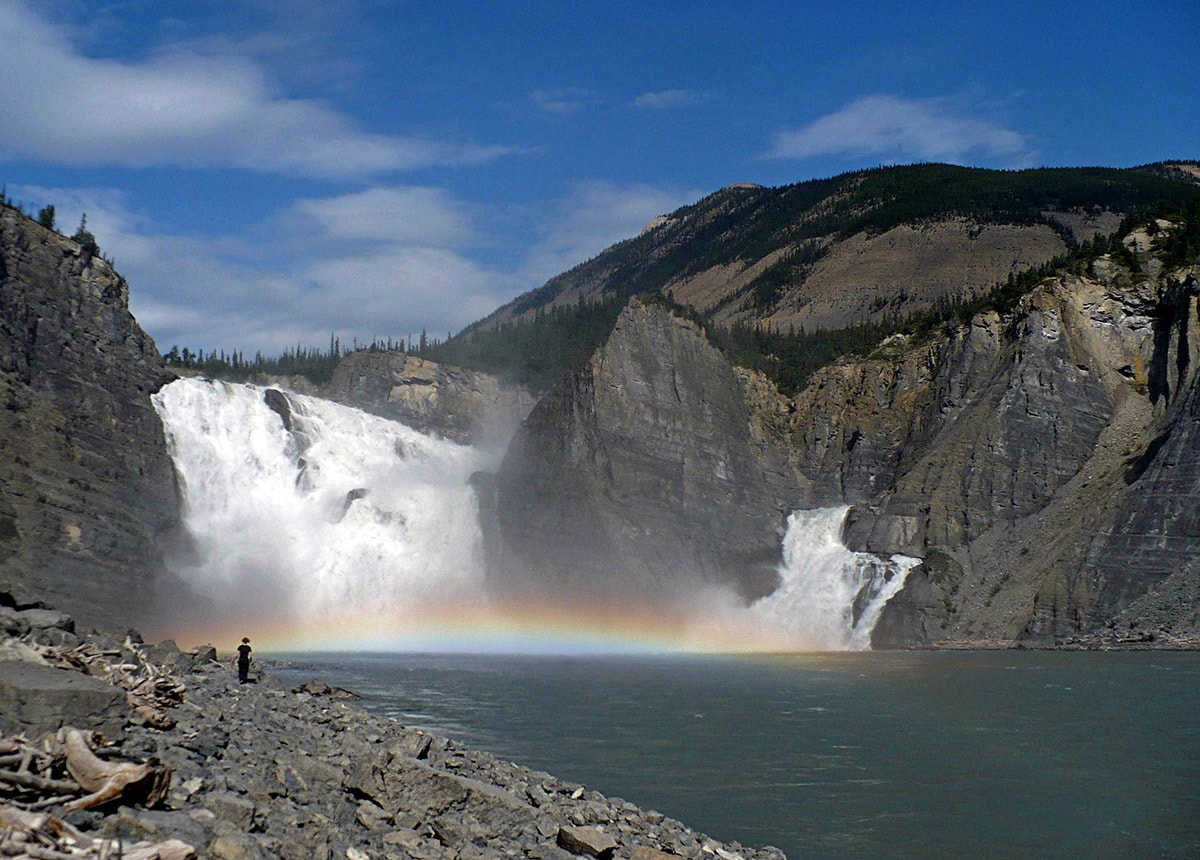
Waterfalls
Some of the most fascinating and awe-inspiring natural monuments are waterfalls or locations where a river abruptly changes its elevation.
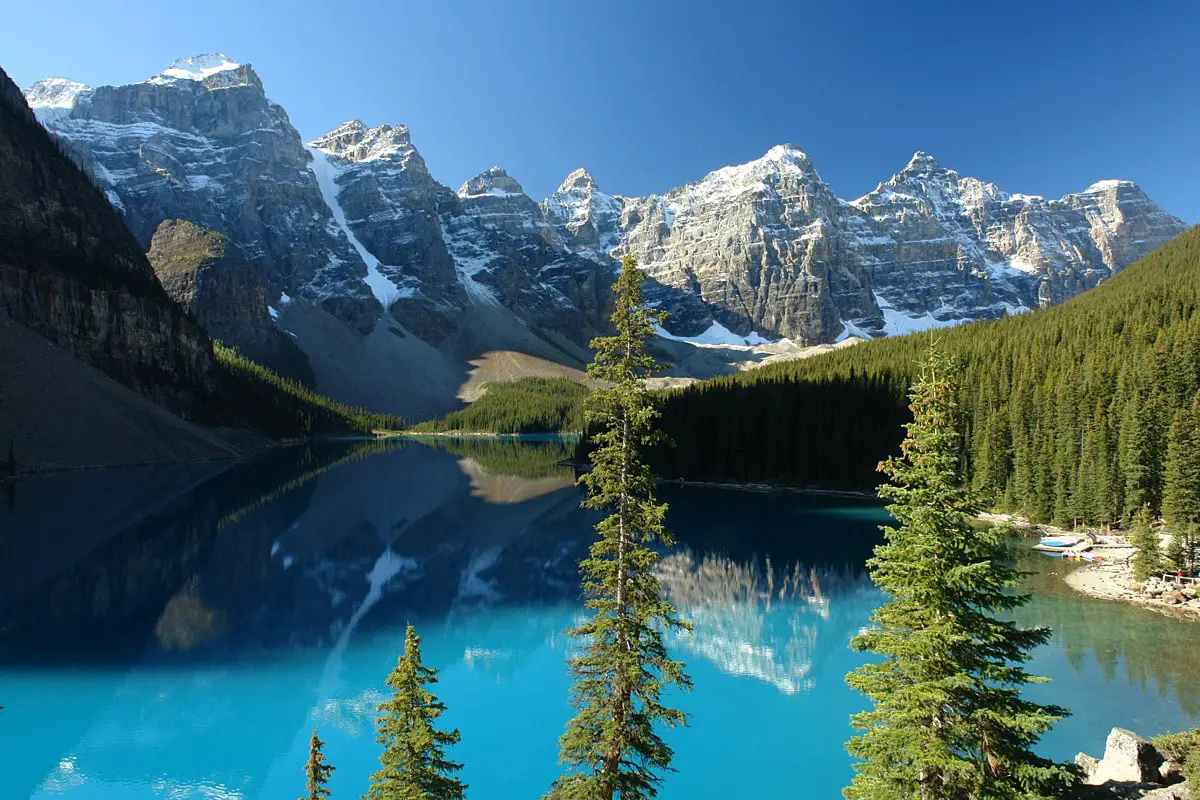
Wonders of Canada
The second largest country in the world (by size) has plenty of landmarks and wonders to offer. Most impressive are natural landmarks, especially the waterfalls, cliffs, and other landmarks in the Canadian mountains.
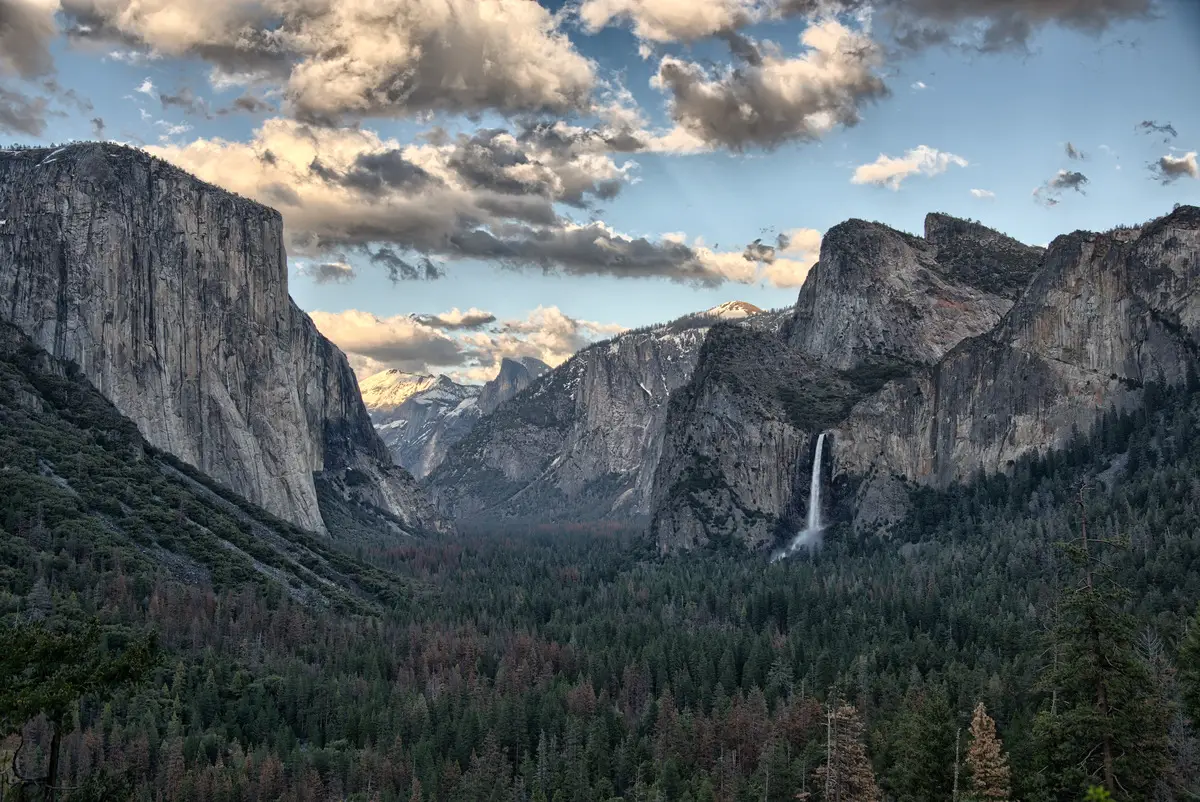
Wonders of the United States
The United States of America is one of the largest countries in the world and offers a wide array of diverse attractions: many are unsurpassed in the world. Highlights of the United States are cliffs, canyons, and rock formations, several impressive downtowns of cities with numerous skyscrapers as well as a rich array of geothermal features, and the giant forest of California.
 Recommended books
Recommended books
Niagara: A History of the Falls
A sweeping history of this natural wonder, from its geological beginnings to the present.
In the Mad Water: Two Centuries of Adventure and Lunacy at Niagara Falls
T. W. Kriner returns with a fresh torrent of stories from the dark history of Niagara Falls. Written with a healthy dose of horror, exacting attention to detail, and a splash of macabre humor, this book includes the tragic voyage of the Grider; a ghastly plunge into the postmortem world of Niagara’s victims; the complete story of Robert Overacker’s bid to conquer the Horseshoe Fall; rare photographs of disasters, heroes and stunters; scores of murders, suicides, and spectacular accidents; a thorough chronology of Niagara stunts.

